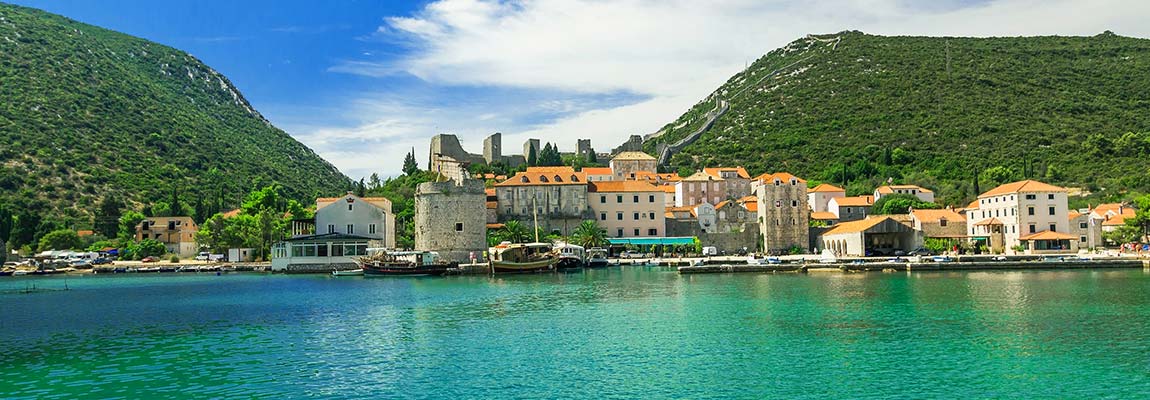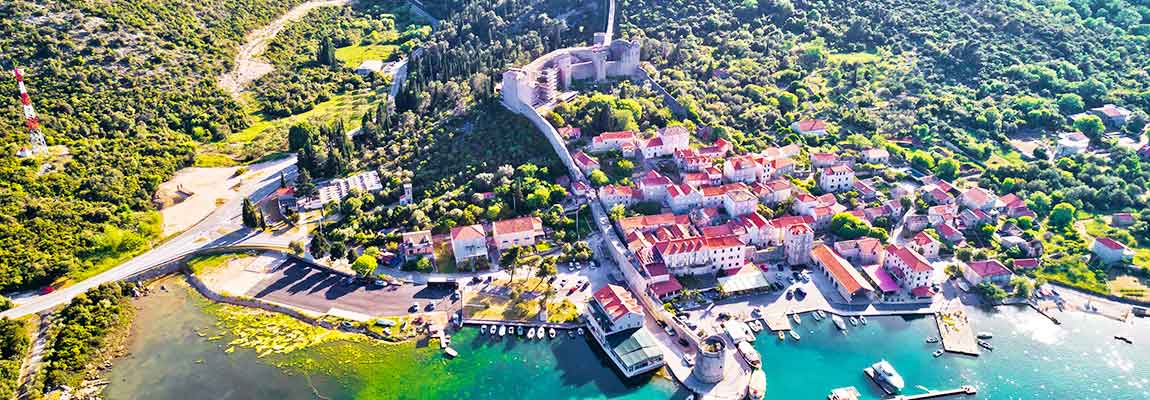






The word Mali is derived from the Mandinka language which means "the place where the king lives". Not known to many, but Mali was the home to one of Africa's wealthiest kings and economies. The country has a vast landmass, but the majority of the population is restricted to the southwestern part of the country. Mali is popular for its mudbrick architecture which is visible in many of its historical sites. The country is the 3rd largest producer of gold in Africa and 42% of the population is employed in the farming sector. The country of Mali is known for its manuscripts that have been kept safe by the people of Mali, over many generations. But over the years, a conscious effort has been made to preserve and safeguard these priceless treasures. Let us dig into Mali tourism with this travel guide.
Compared to the rest of the world, network connectivity has been a concern in Mali during the present times. Although these concerns are more limited to the northeastern part of the country where the terrain tends to pose several issues. However, the story is slightly different in the southern part of the country. As it seems that several resources have been allocated to help support and increase network connectivity, which in turn will help drive Mali tourism.
There are two major telephone operators in the country of Mali, who have established themselves as the prime contenders for improved network connectivity. The first one is Ikatel, which is a subsidiary of Sonatel of Senegal. Then we have SOTELMA, which is a state-owned telecommunications operator. Both the operators have subsidised rates for tourist to help promote Mali tourism.

Modern-day Mali was once part of the three greatest empires in the history of West Africa. As per modern-day Mali history, the empires were namely Ghana, Mali and the latest one was the Songhai empire. It was the Ghana empire that grew wealthy through the trans-Saharan trade of gold and salt.
The founder of the Mali empire was Sundiata Keita between 1214 and 1255. The Mali empire history showcases that during the reign of Musa Kelta, the news of the wealth of the Mali empire reached far and wide. Due to its growing influence, the Mali empire history had a massive impact on the culture of the region.
However, the greatest ruler to ever rule the Mali empire culture was Mansa Musa and is well known for his pilgrimage to Mecca from 1324 to 1326. The ruler made his journey to the holy land with 12,000 slaves, 60,000 soldiers, 80 camels and enough gold to devalue the worth in the international trade market.
The Songhai empire followed next, but instead of materialistic mediums, they invested in knowledge and manuscripts. The fabled city of Timbuktu became one of the important cities of the Songhai empire. The city emerged as a centre of learning and witnessed the establishment of the University of Timbuktu in the 16th century.
In the late 19th century, the Mali empire culture came under the colonial rule of France and became part of French Sudan. In early 1959, French Sudan formed a federation with Senegal and became the Mali Federation. The federation gained independence from the French on 20th June 1960. Post-independence, Senegal withdrew from the federation in August and French Sudan became the independent Republic of Mali.
Mali is located in western Africa and is landlocked by seven countries on all sides. With Algeria to the north, Mauritania, Senegal and Guinea to the west, Ghana and Cote d'Ivoire to the south and Burkina Faso and Niger to the east. The Prime Meridian passes through the district of Gao, making it a place of significance.
The majority of the country lies in the southern Sahara Desert, which leads to an extremely hot and dust-laden Sudanian savanna zone. Every year during the rainy season, the Niger river is flooded causing the formation of the Inner Niger Delta.
Mali geography makes it evident that it is a flat piece of land with minor parts of the land jutting out to form raised rock pieces covered with sand, as one moves towards the northern parts of the country.
Ancient Mali culture and tradition are unique and diverse, because of the various forms of tribes that have influenced the land. The most prominent piece of Ancient Mali culture is depicted in its forms of music, literature, sport and cuisine.
Malian dance itself seems to have different forms because of the different tribes that have formed up today's Mali. The majority of the performers are "Griots" or "keepers of memories", who have carried on the tradition over generations. Dance events are common performances during family gatherings. Also, traditional mask performances happen during ceremonial events.
There have also been several musicians from Mali known for their efforts to revive the art of several Malian musical instruments. From Toumani Diabate mastering the Kora to Bassekou Kouyate perfecting the art of playing the electronic jeli negroni. Several Mali artists have left their mark in the music industry such as Saif Keita, Rokia Traore, Oumou Sangare and many more.
Mali CuisineRice and millets are a staple in the Mali cuisine and are heavily based on cereal grains like quinoa, broken wheat, etc. Mali food and Mali dishes would include greens like spinach and baobab (found all over Africa) are often used in tandem with grains to make sauces. Another famous Malian sauce is the peanut sauce, which is often accompanied by pieces of grilled meat like beef, goat, chicken and lamb from the base of almost all Mali food. Poulet Yassa is the Mali traditional food and is a popular Mali dish among the locals.
Each region of Mali has its specific type of diversity or change when it comes to food. There is also a tradition in Mali where a guest is served Malian tea on arrival which is black tea and sugar. The guests are welcome to up to three portions of tea, but if the 4th portion is served. Then it is time for the guest to leave the house.
Mali traditional foodFufu | Malian style Jollof rice | Maafe | Tiguadege na | Alabadja | Fakoye | Saga Saga | Poulet Yassa | Couscous de Timbuktu
Must try Mali DrinksDjablani juice (ginger/hibiscus) | Malian style tea | Homemade Millet Malian Beer
HospitalityMali traditions have been hosting strangers for more than a thousand years, and such has been the values passed down over generations. Mali traditions and Mali empire history have been impacted greatly by Islamic traditions and it shows in their lifestyle and hospitality towards strangers. People of Mali are quite generous by nature and have been known to offer tea to strangers.
The tea sharing tradition dates back to the era where people from different tribes would gather for a sit-down. These traditions have been passed down over generations and still practised to this day. Malian culture boasts of hospitality through its ways of treating every stranger as a guest.
Mali weather is quite controversial as Mali is a land of diverse and extreme weather conditions thus, making it important to plan one's travel while visiting the country. Mali's southern part lies in the tropical belt of the world and the northern is closer to the equator. However, the Timbuktu weather conditions may slightly vary from the southern part as it lies in the semi-arid region of the country.
Bamako weather may differ from March to May being hot and dry, whereas June to October witnesses major rains in the southern part of the country. That leads to flooding of major areas and the overflow of the Niger river, causing the Inner Niger delta. November to February is normally cool and without rains. Mali weather tends to play an important role for tourists who visit the country. In the drier months, Mali temperature may rise to a maximum of 39â and lows are generally around the 25â mark.
One thing to do in Mali is paying a visit to the National Museum, one of the top Mali tourist places. The museum houses some of the most prominent pieces of the Mali, Ghana and Songhai empires. The artefacts are a depiction of how different tribes with different traditions managed to live together. The museum aims at promoting national unity while celebrating traditional Malian culture. Some concrete made miniaturised models of some prominent architectural marvels in the country can be found in the museum.
Best time to visit: November to February
Entry Fee: Free
On the list of places to visit in Mali, as the name suggests, the structure was built during the time of Mali's struggle for independence from the French forces. It is a top site for Mali tourist places and an architectural marvel built on 22nd September 1995. Many Malians consider the monument to be a symbol of national pride.
Best time to visit: November to February
Entry Fee: Free
One of the major Mali tourist attractions is located in the capital of the country of Mali. Bamako Grand Mosque is the tallest structure in the country of Mali. The structure was built on an existing pre-colonial mud-brick mosque, funded by the Saudi government at the end of 1970. The structure is visible from almost all corners of the city.
Best time to visit: November to February
Entry Fee: Free
Another well-known Mali tourist attraction witnesses the story behind the rise and fall of this city in the Tombouctou Region of Mali has a very mysterious history. Timbuktu history has unfolded many secrets that were found by archaeologists. The Timbuktu history unravelled that many of the locals of the city made several sacrifices to preserve the essence of the city. It was found out that the locals of the city hid caskets of manuscripts under the foundations of their house. To save them from destruction by the hands of the Moroccan, Sufi jihadists and the French forces that invaded the city.
Best time to visit: November to February
The normally quiet region of Gouina between Kayes and Bafoulabe experiences many activities for three days in January every year. The festivities witness Goumbe and Jazz players play their instruments in an area surrounded by monkeys and hippos. The event also showcases five different tribes from the Kayes region.
Festival of the NigerThe festival takes place in February in the Segou region and is filled with various events ranging from workshops, music, dance, craft vendors and pirogue boat races along the niger river. The festival becomes a bustling hub of art and talent as it becomes the platform for Segou's more than 15 forms of puppetry and dance styles. This festival becomes a homing beacon for several artists in and around Mali.
Desert FestivalOver the past few years, the festival's location may have moved from Essakane to Timbuktu, but the February music festival event is still as popular as ever. The festival witnesses the likes of Justin Adam and Robert Plant perform alongside some of Mali's most renowned Tuareg musicians. The festival over the years has evolved from a gathering of Tuareg players to an international event of peace.
Diamwari FestivalOne of Mopti's first and main events since the time it was held along the banks of the Bani River. The festival is referred to as a weekend of happiness and takes place over three days towards the last week of February. It is here that the winners of the pirogue river race are awarded the winning prize money and victory flags called jonjon.
Mali passport requirements remain the same as for any other country. That is, the Mali passport traveller needs to ensure the passport is valid for a minimum of six months post the dates of travel and stay.
Mali VisaMali visa policy requires one to clear the immigration at the Mali borders, for which you need to have the following documents: ⢠Valid passport ⢠At least one blank page for entry stamp ⢠Valid document of yellow fever vaccine ⢠Valid Mali E-visa Mali visas for Indian nationals need to follow the similar procedure mentioned above. And also, Mali visas for Pakistani nationals need to follow the same guidelines, in addition to the added cost of the visa and vaccinations
Mali Visa-free countriesThere is a list of countries that are eligible for entry, without a visa. As they fall into the category of Mali visa-free countries. ⢠Algeria ⢠Andorra ⢠Benin ⢠Burkina Faso ⢠Mali ⢠Cape Verde ⢠Chad ⢠Ivory Coast ⢠The Gambia ⢠Ghana ⢠Guinea ⢠Guinea Bissau ⢠Indonesia ⢠Liberia ⢠Macau ⢠Mauritania ⢠Monaco ⢠Morocco ⢠Niger ⢠Nigeria ⢠Senegal ⢠Sierra Leone ⢠Togo ⢠Tunisia ⢠United Arab Emirates
Mali visa on arrivalOnly two nationals on the entire planet may apply for a Mali visa on arrival for a maximum of 90 days or three months. ⢠Kenya ⢠Rwanda
Mali has several paved roads leading out of the capital city of Bamako, to the neighbouring cities and some cities to the east. But from June to September, some of these roads tend to be flooded by the rains. While visiting Mali, four-wheel-drive enabled cars, with spare tires and emergency supplies are a must, as professional roadside service is rarely available. Travellers are recommended to travel with sufficient food and water supplies. Whereas for drivers it is recommended to always travel with at least half a tank of gas at all times, as gas stations are scarce. And if possible, carry extra fuel onboard in case of emergencies.
AirThere are only 8 airports in the country with paved airstrips, which makes road travel the safest bet to reach your destination.
RoadRoad travel is the best option to explore the country, as there are corners of the country which can only be accessed on a 4x4. Just ensure to avoid travelling at night and make certain to hire a local guide for the duration of your stay.
RailwaysThe country has rail services, but it is limited only to the borders for connecting Mali with the neighbouring countries.
WaterWater transport is not popular, as the Niger and the Senegal river that flows into Mali do not cover the entire country. The Niger River flows from the southeast part of the country to the southern part of the country. While the Senegal river traverses from the south to the southwestern part of the country, making water transport, not a viable option.
Cities like Abidjan, Dakar, Accra and many more offer bus travel services to the country of Mali. However, the places where you can easily get a bus or other modes of transport to enter Mali are Mauritania to Dakhla in western Africa and Nouadhibou from one must hire a bush taxi to reach the final destination. The other better option is to rent a vehicle from any of the major cities.
Via Air RouteOne can fly into Bamako, which is the capital city of Mali. You can reach Bamako via several different airlines. One can either travel into the country from several international airports and if already in Africa, then from several domestic airports spread across Africa.
Via Water RouteMostly around the year, one can get into Mali from the southern parts of the country by hiring a boat on the Niger river, but they would be stopped at the border. One can take a ferry from Guinea by crossing the Senegal River. Another option is to rent a pirogue that plies regularly between Niamey and Gao.
CALLING CODE : +223
Ambulance : +223 - 15
Fire : +223 - 18
Police : - +223 - 17
West African CFA franc is the currency used for trade in the country of Mali. In Bamako, currency One West African CFA franc is further divided into 100 centimes.
MALI CURRENCY CONVERSIONS:
Why book your travel with us?